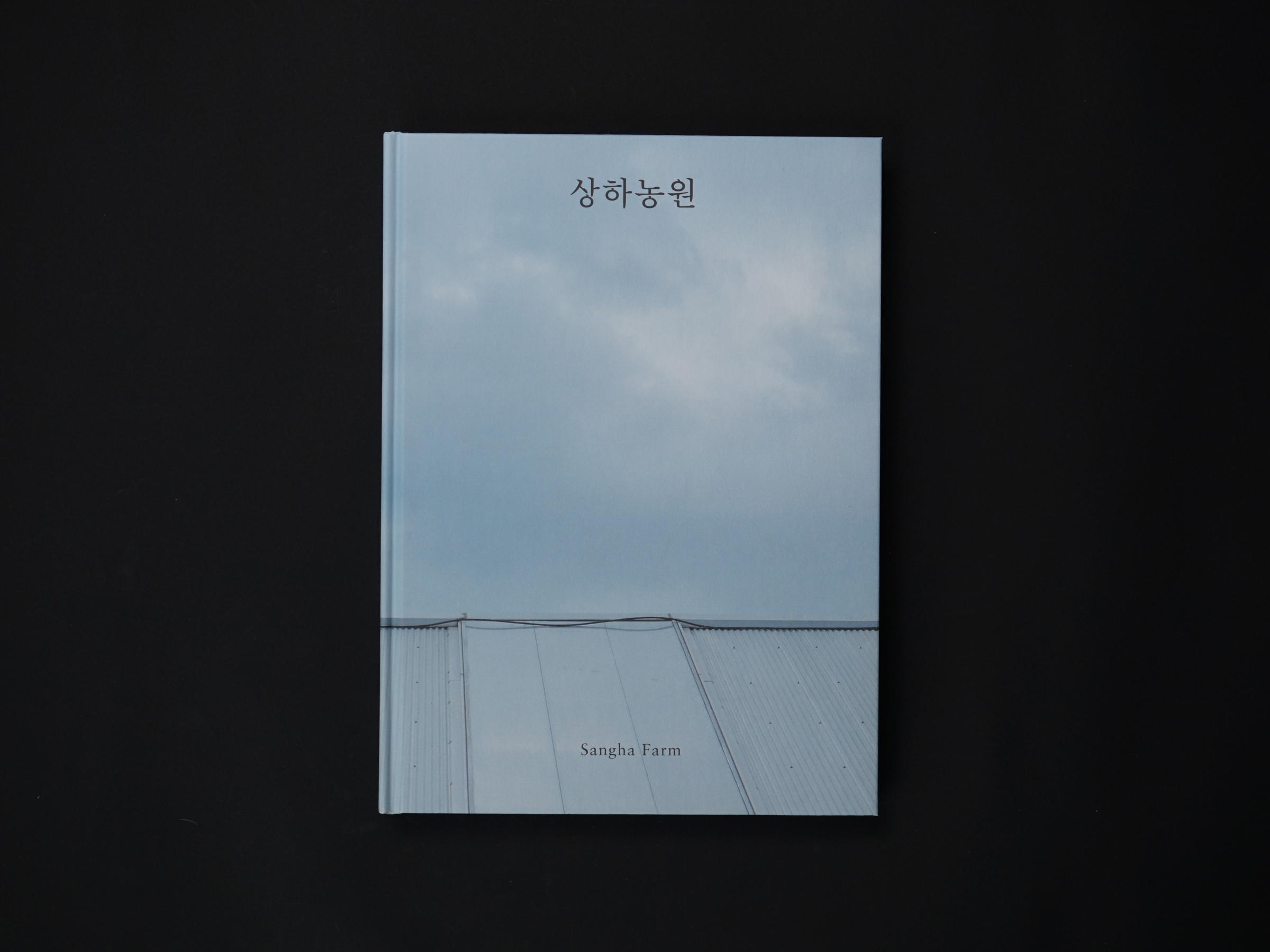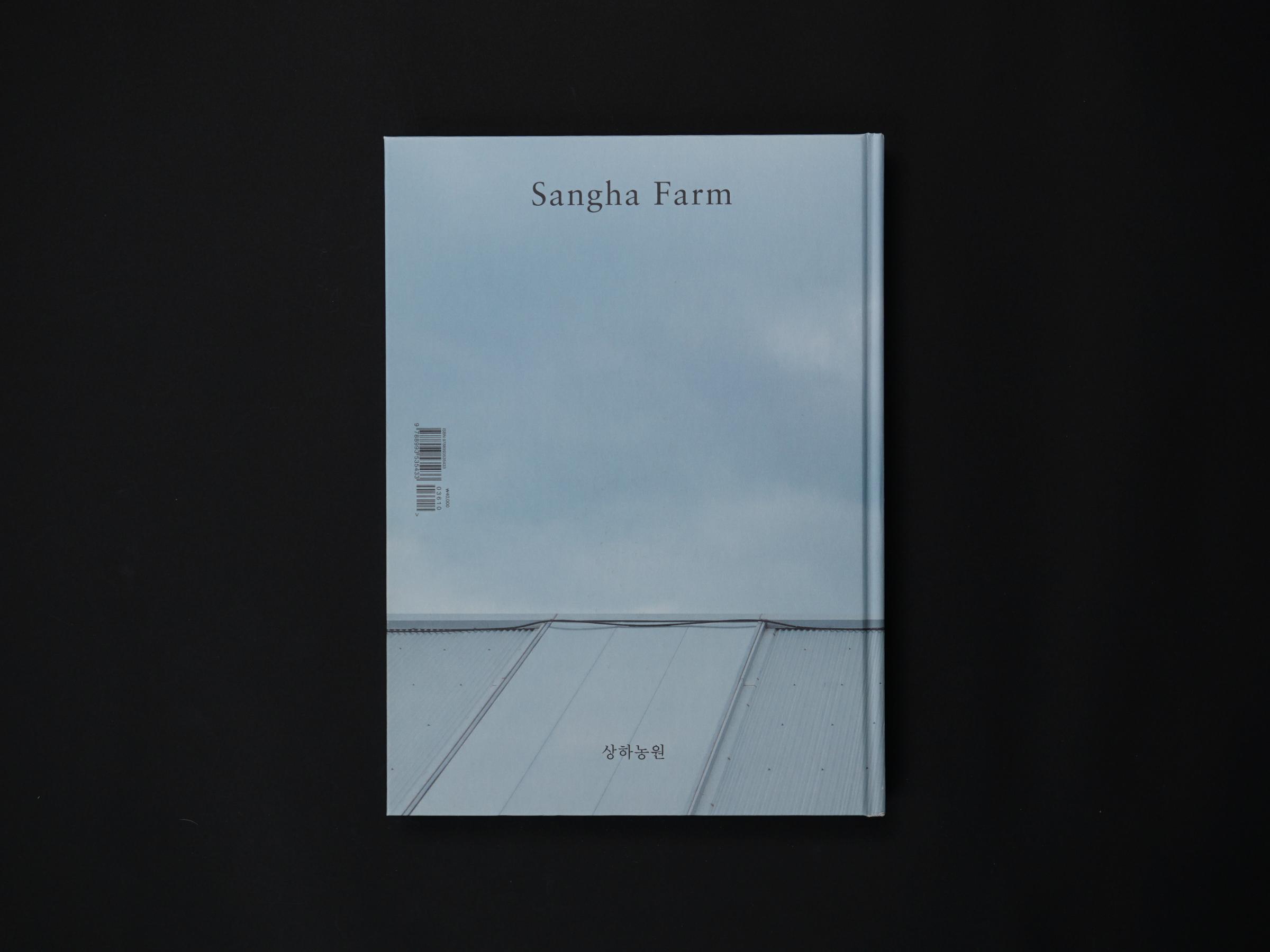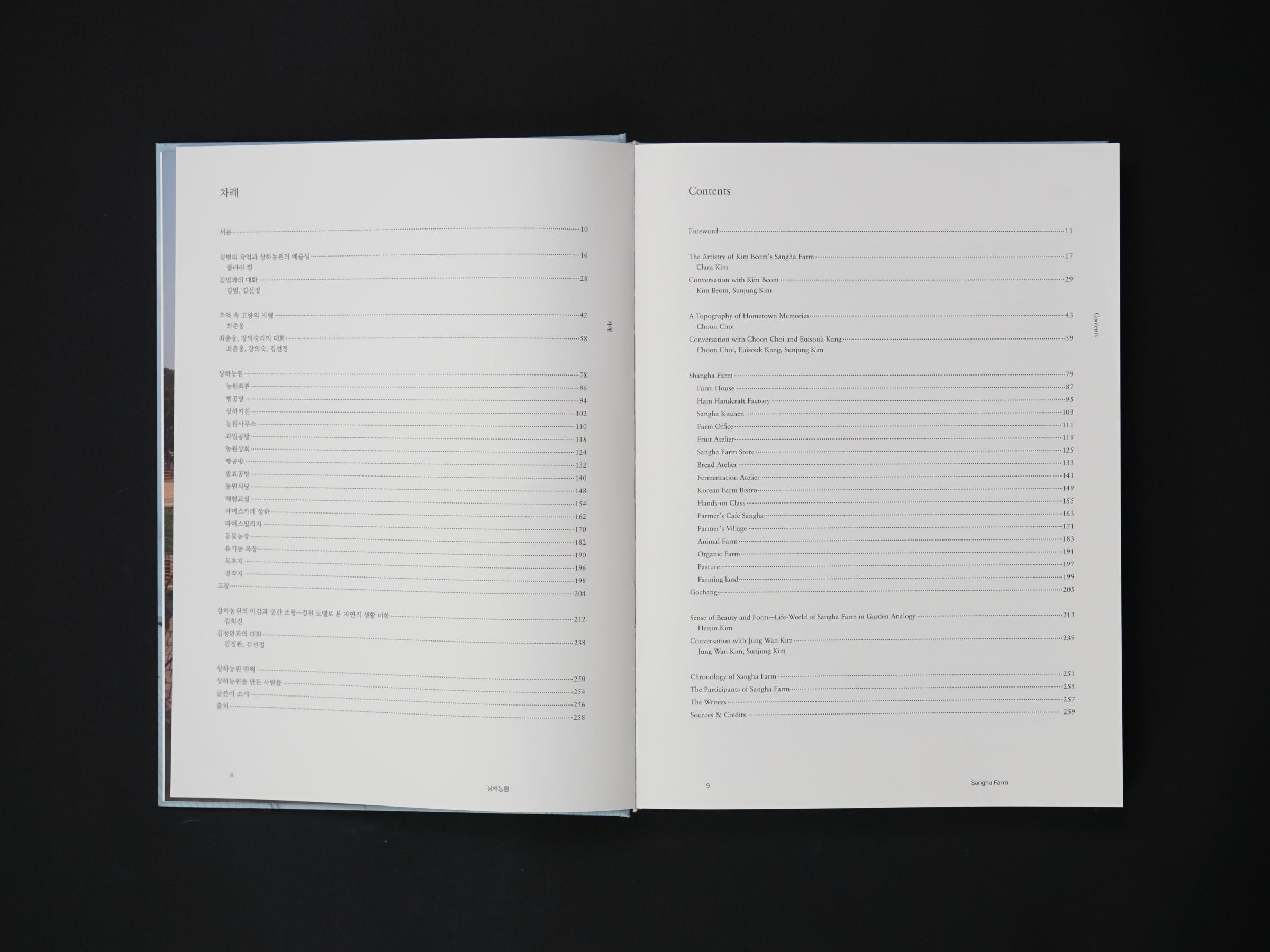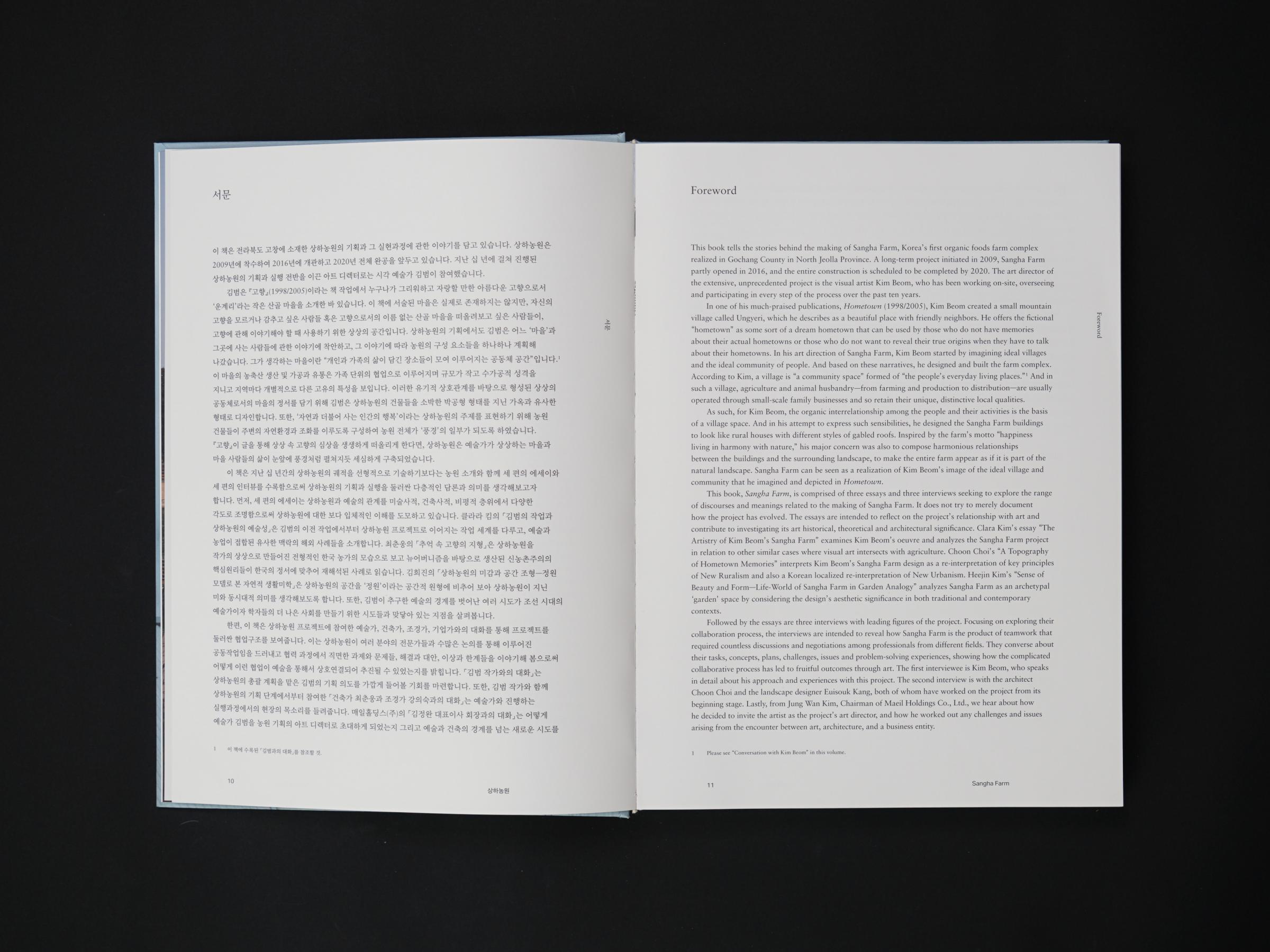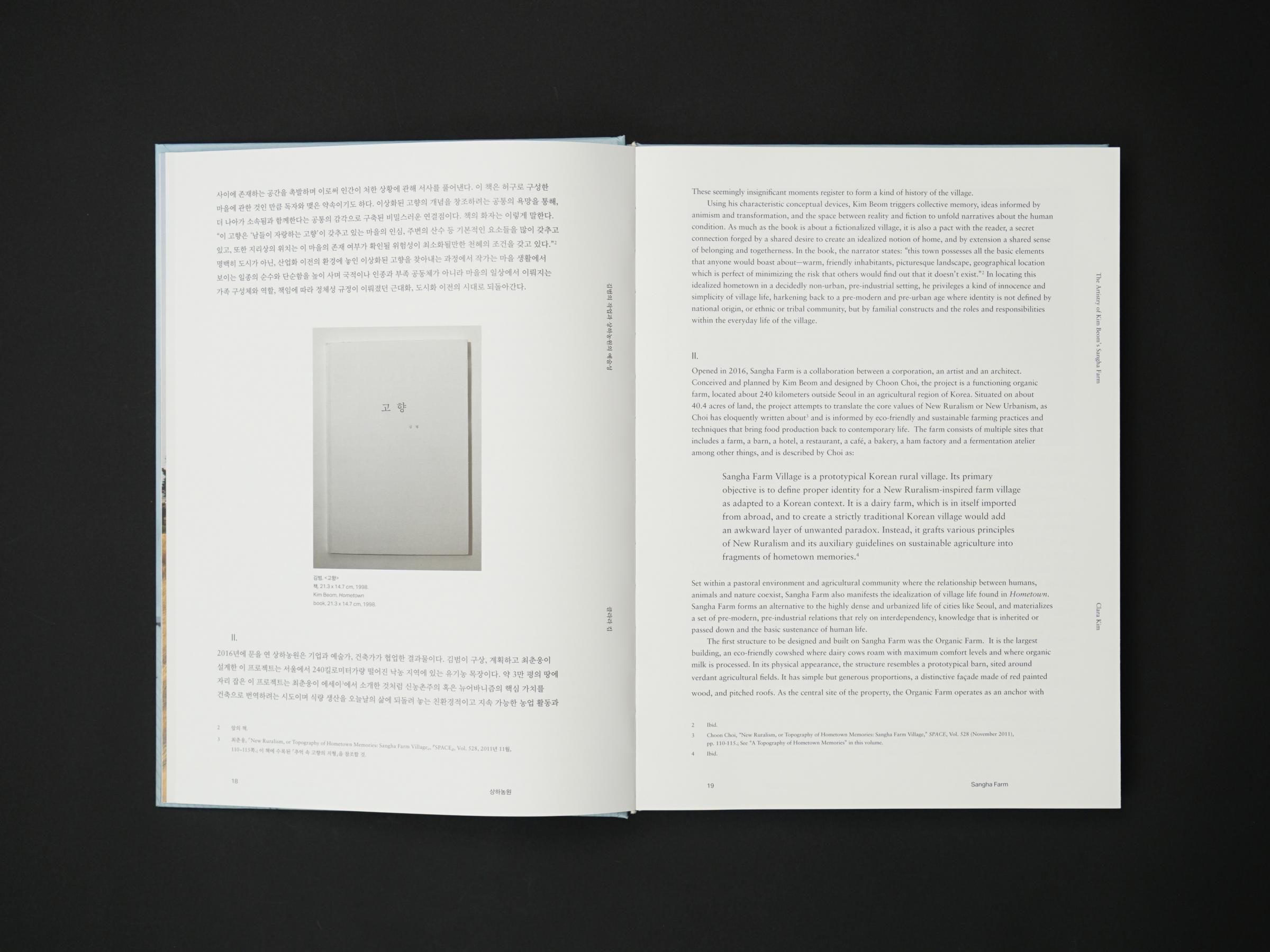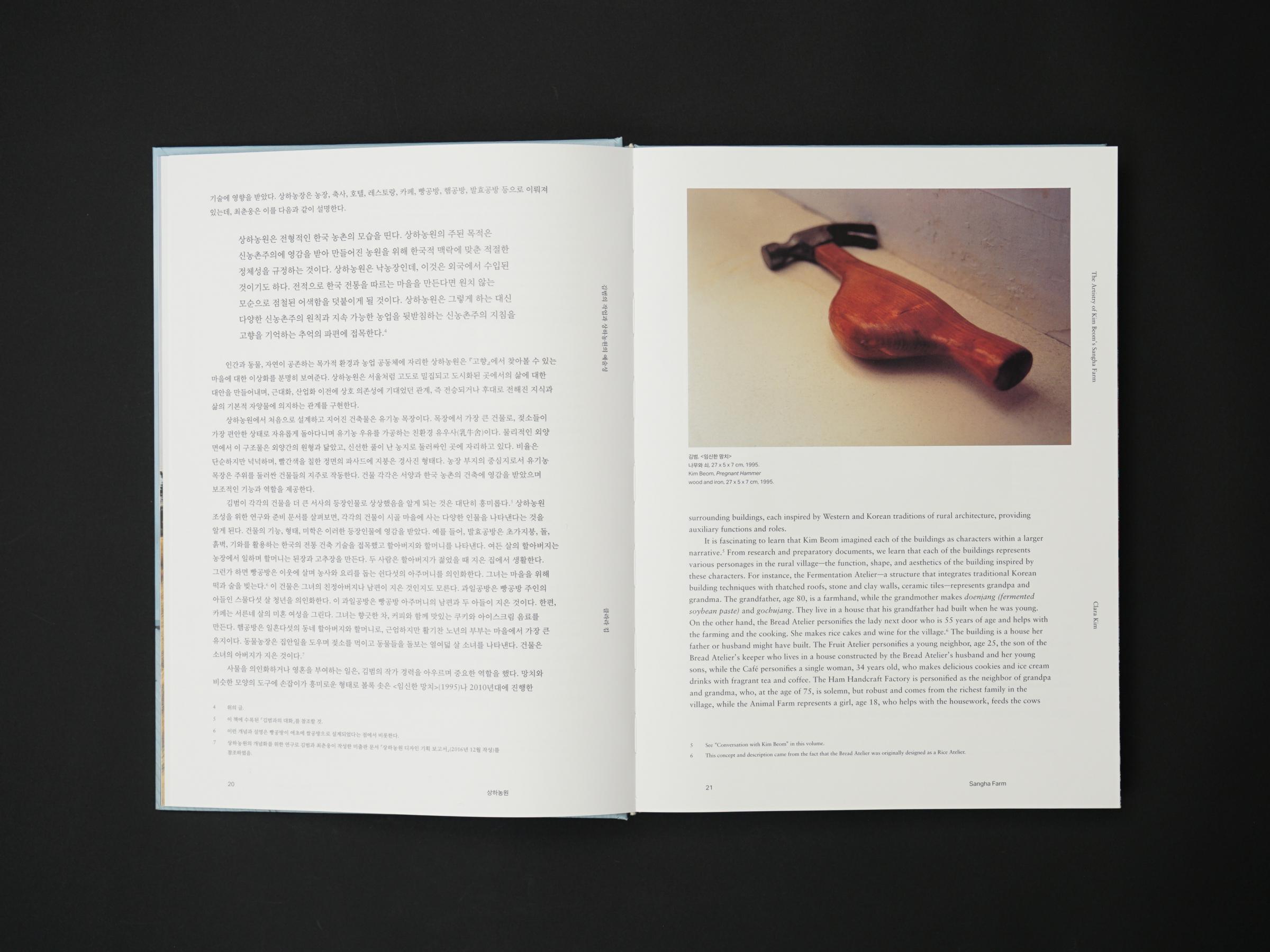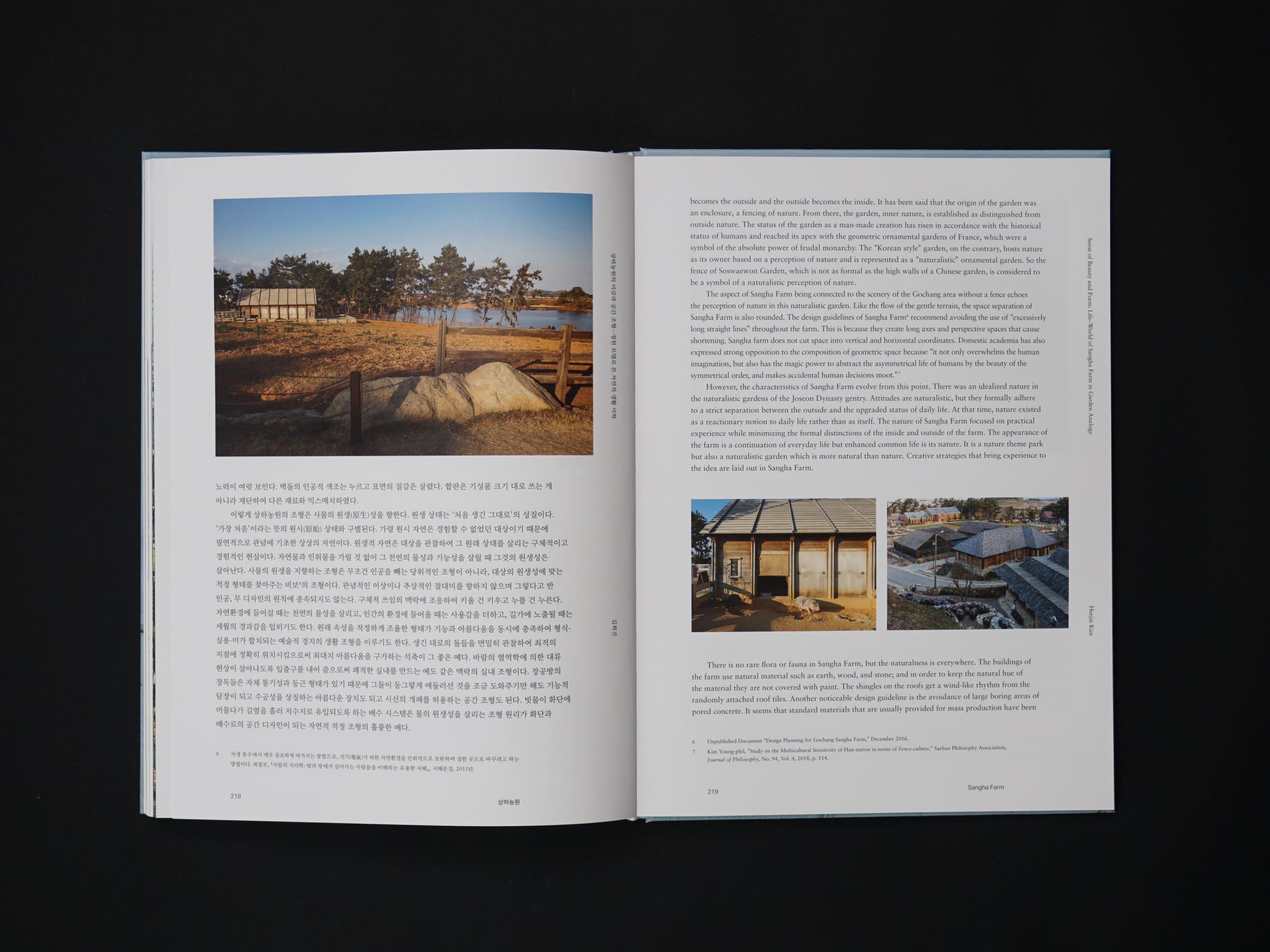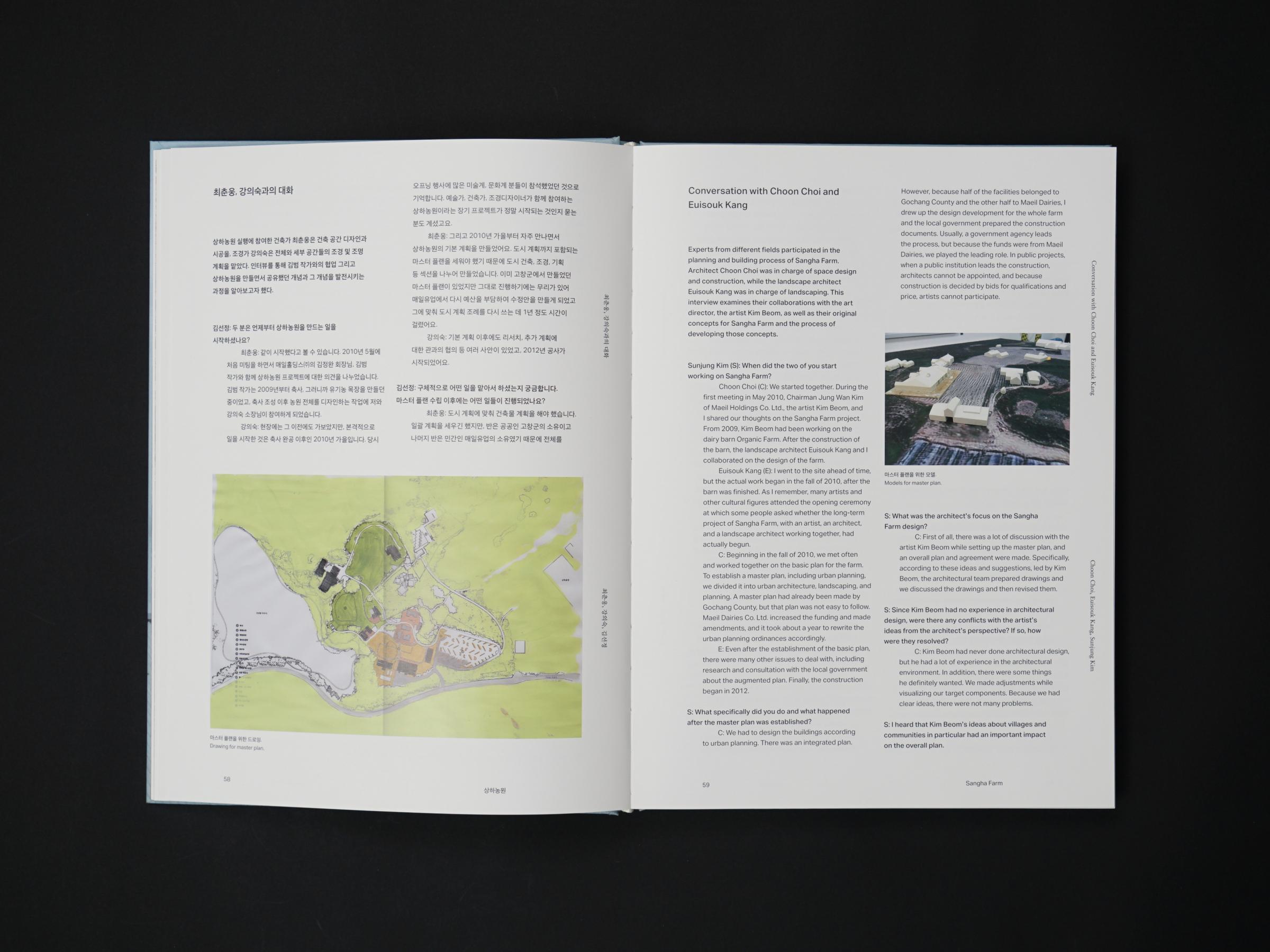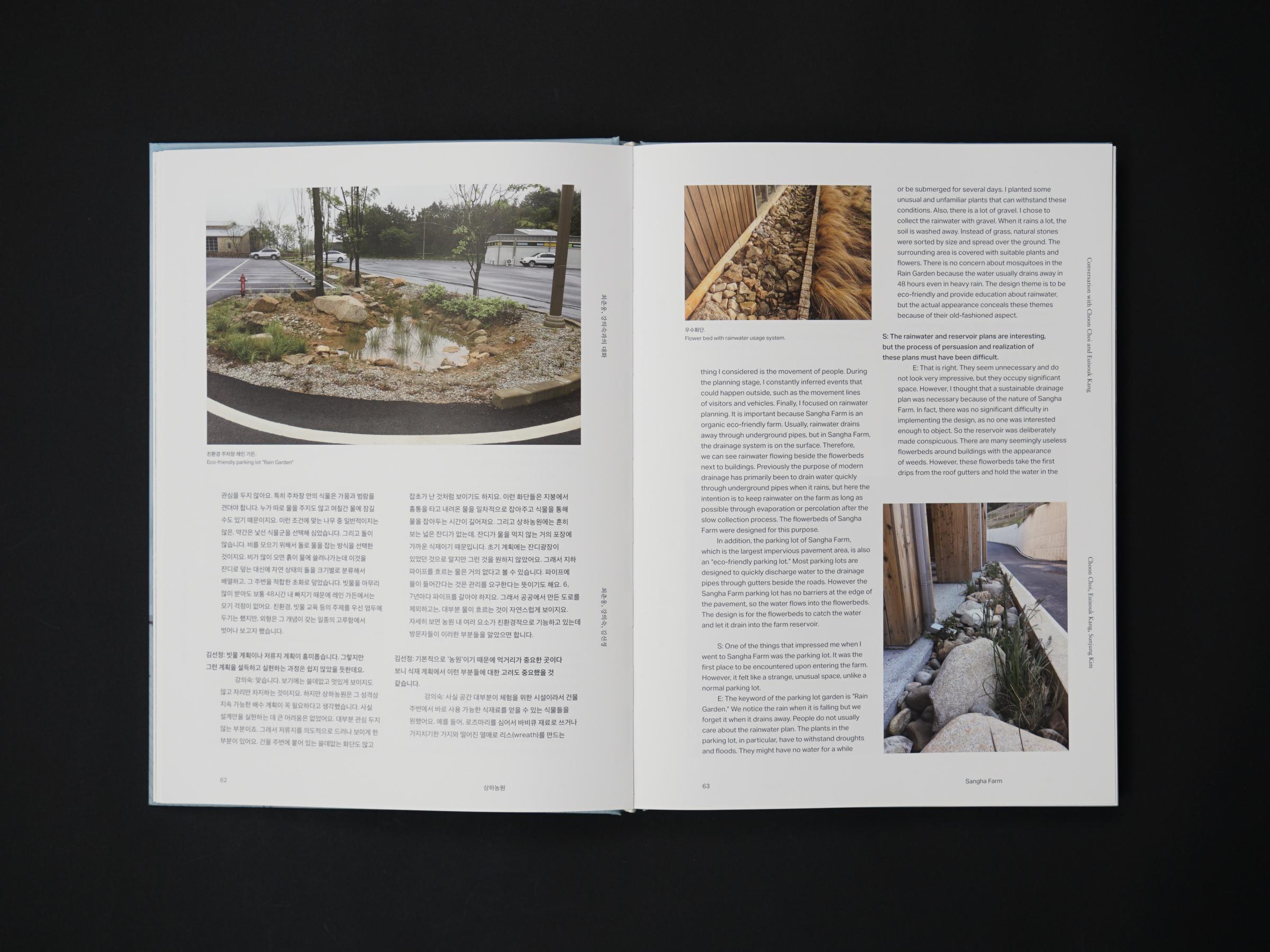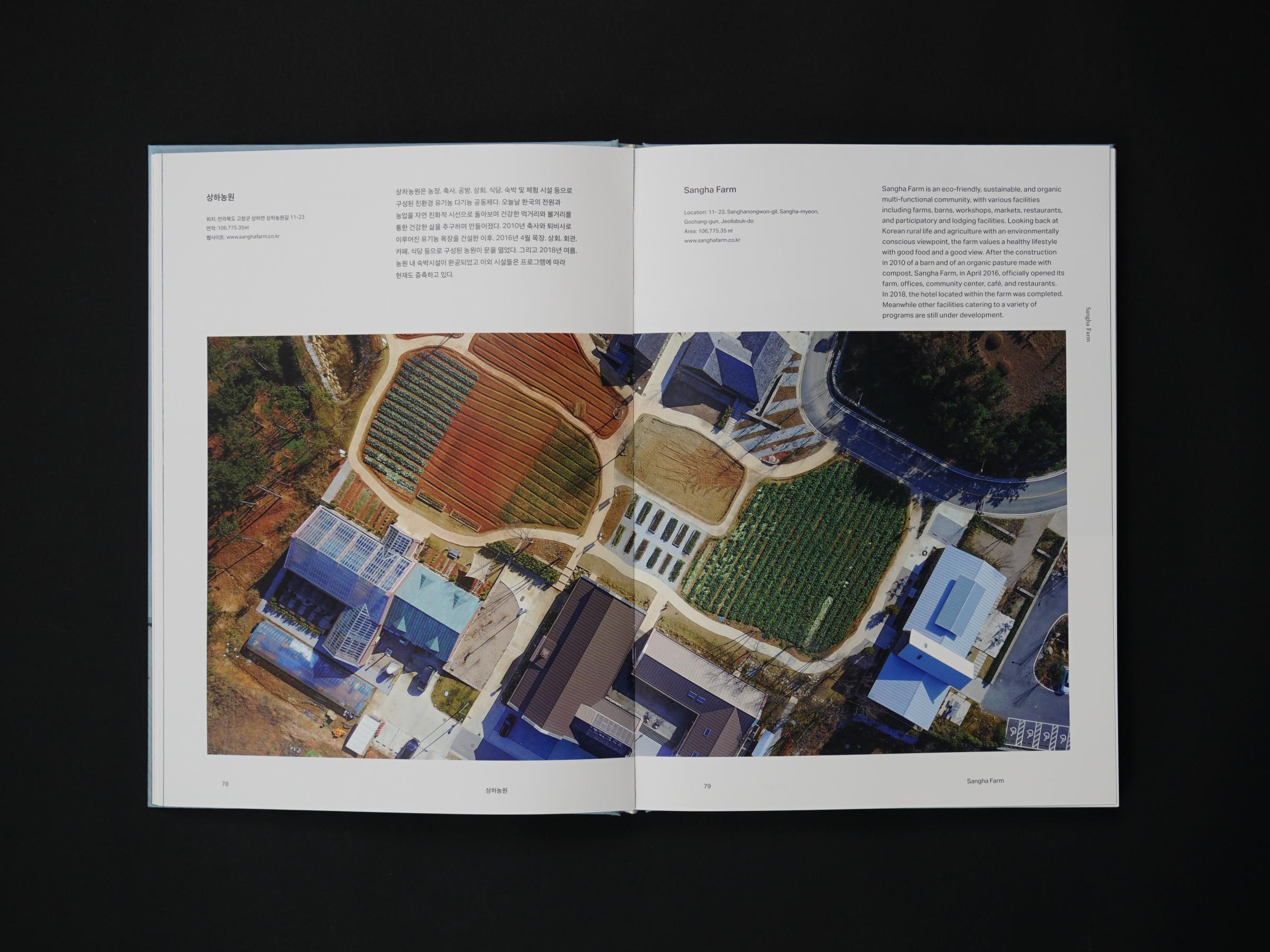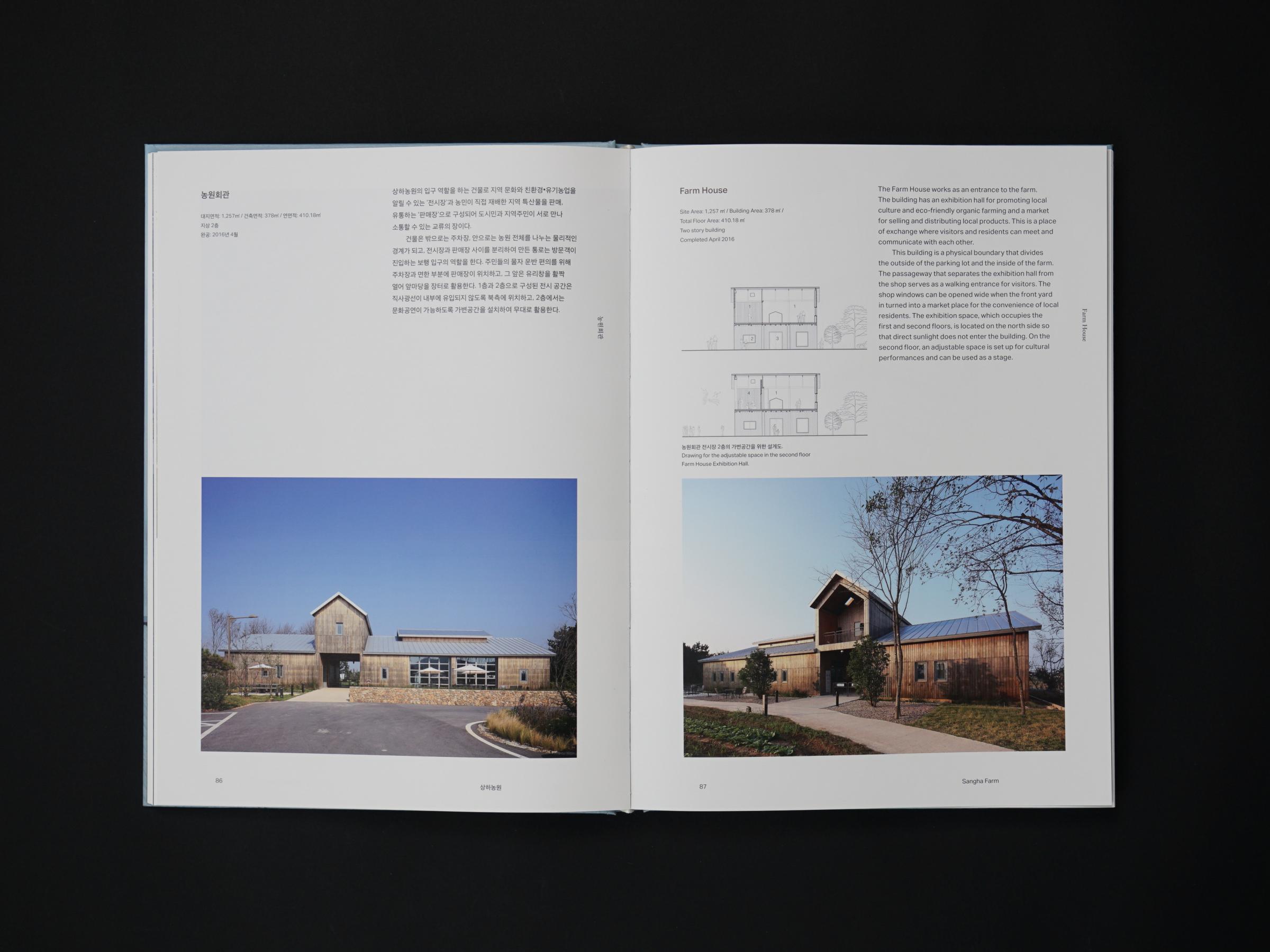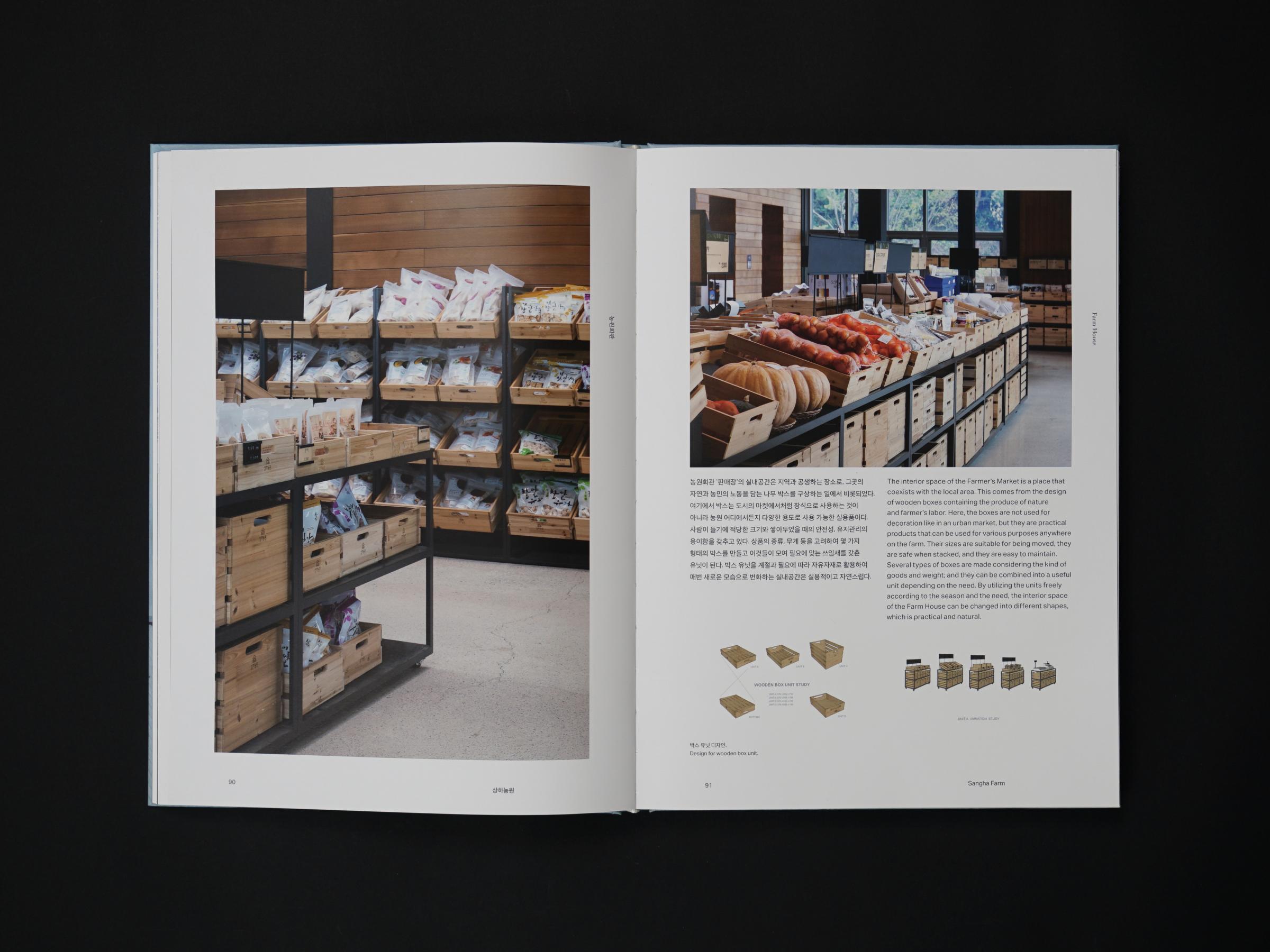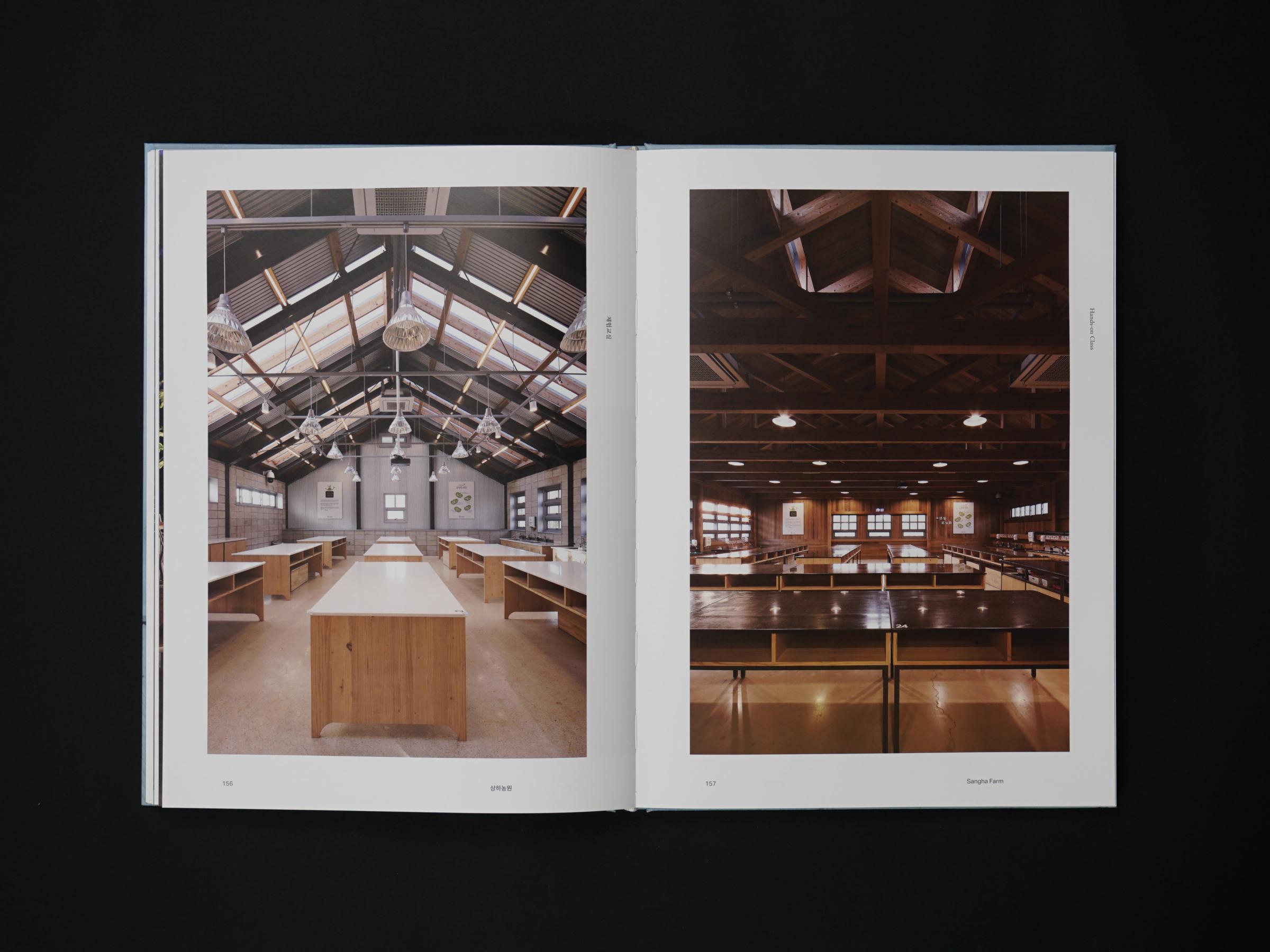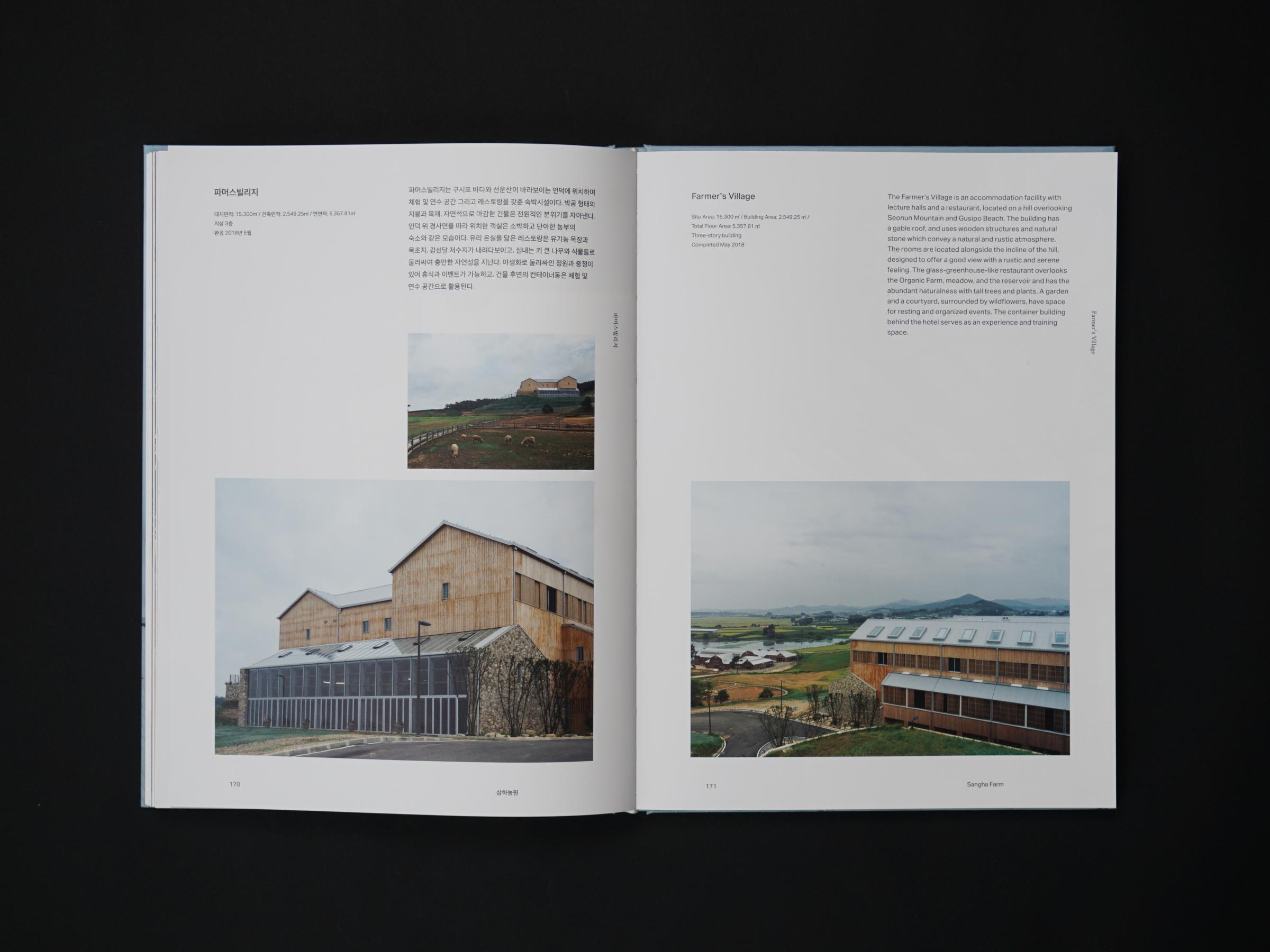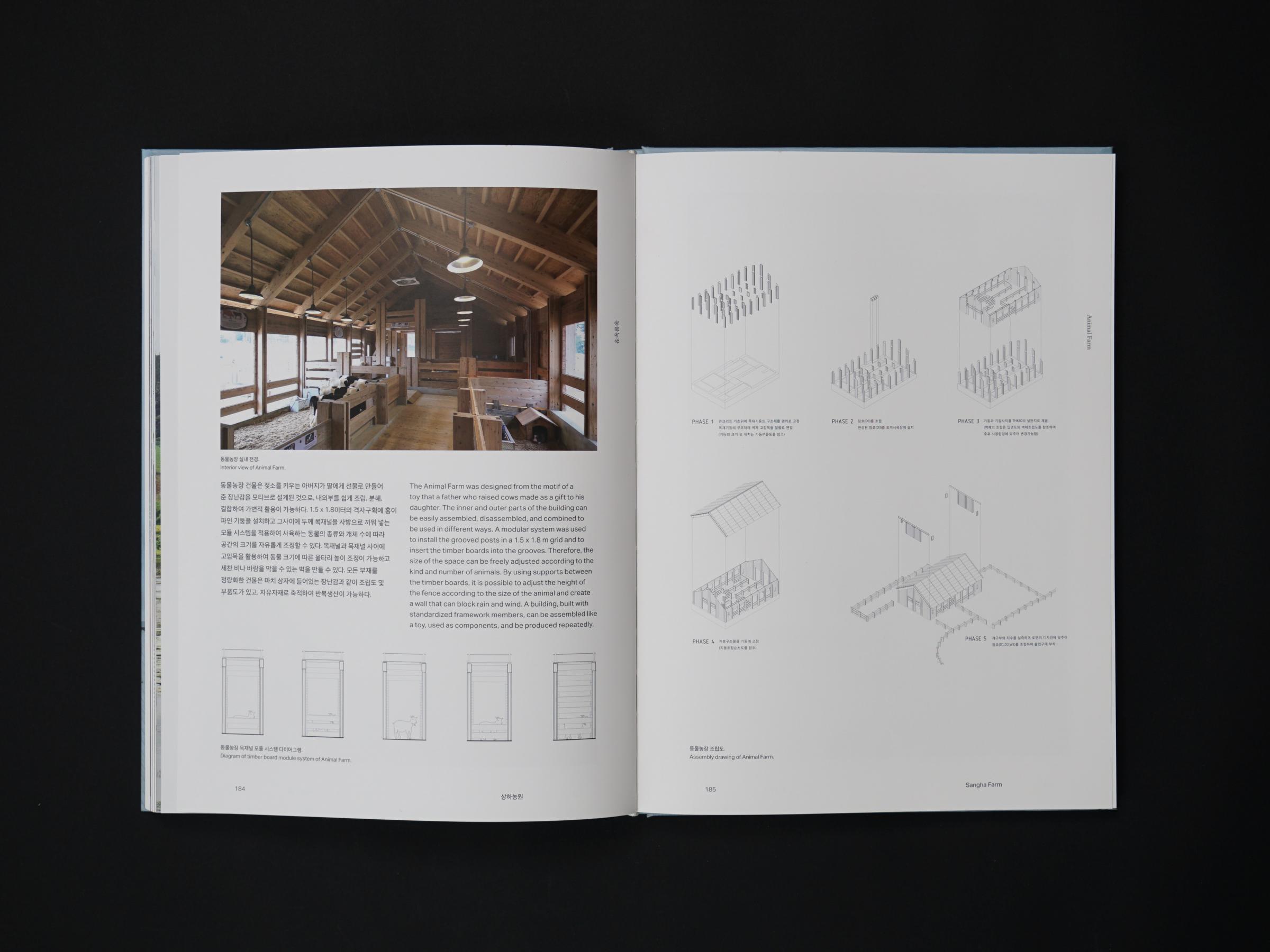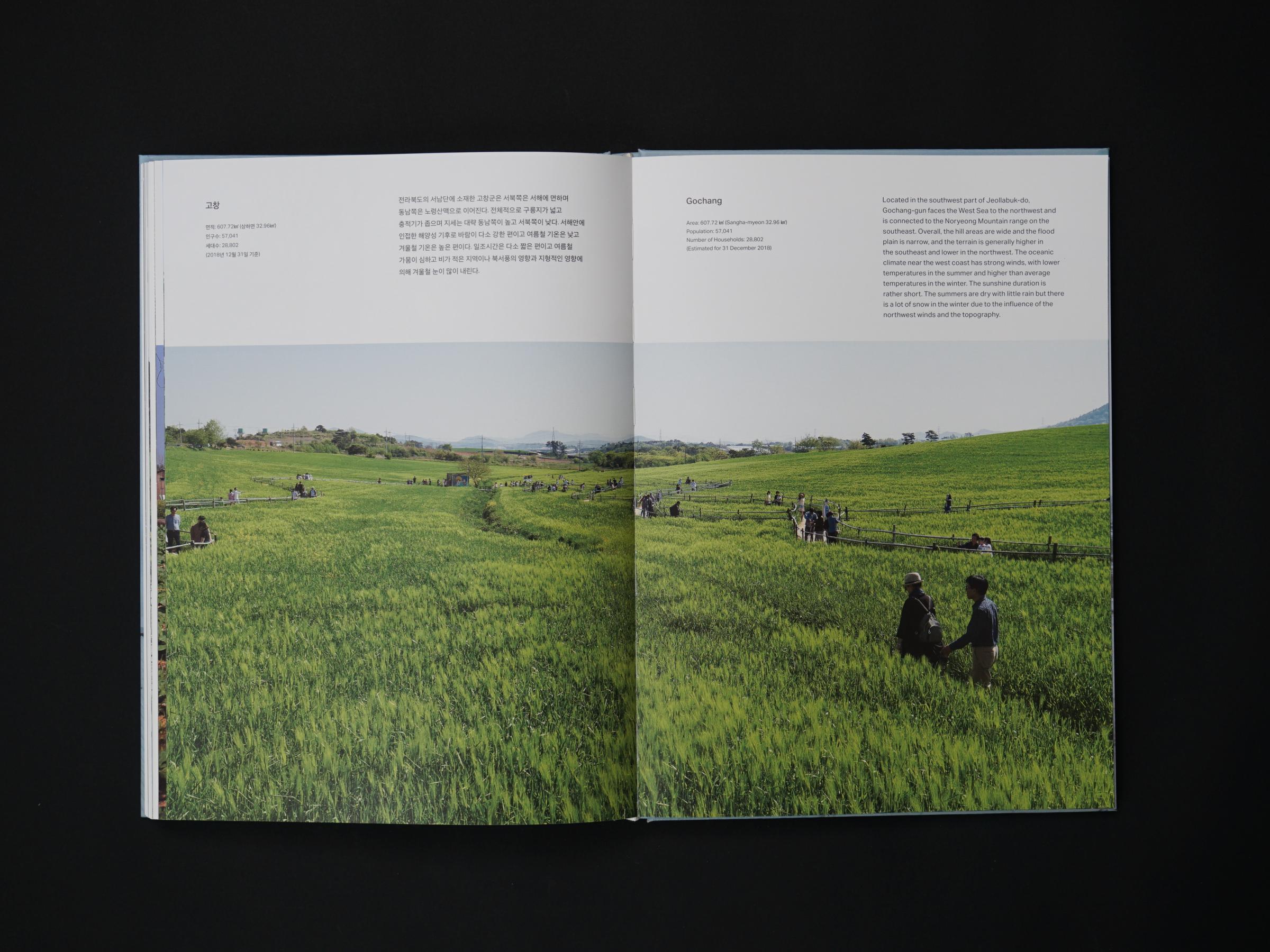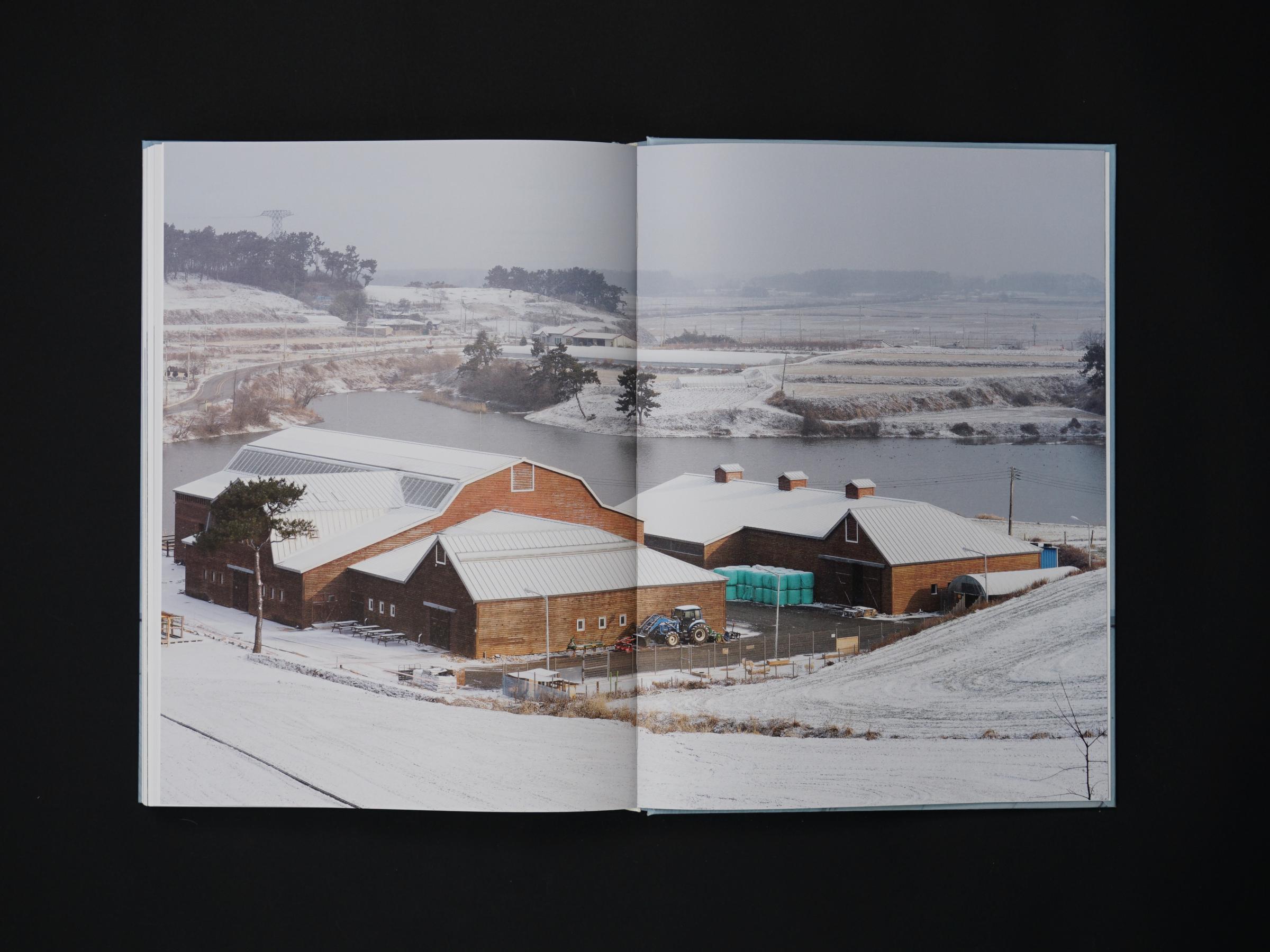상하농원 Sangha Farm
김범 Kim Beom
Year: 2019
Type: Book
Client: 사무소 samuso: space for contemporary art
Artist: Kim Beom
Size: 220 × 300 mm, 264 p.
“이 책은 전라북도 고창에 소재한 상하농원의 기획과 그 실현과정에 관한 이야기를 담고 있습니다. 상하농원은 2009년에 착수하여 2016년에 개관하고 2020년 전체 완공을 앞두고 있습니다. 지난 십 년에 걸쳐 진행된 상하농원의 기획과 실행 전반을 이끈 아트 디렉터로는 시각 예술가 김범이 참여했습니다.
김범은 『고향』(1998)이라는 책 작업에서 누구나가 그리워하고 자랑할 만한 아름다운 고향으로서 ‘운계리’라는 작은 산골 마을을 소개한 바 있습니다. 이 책에 서술된 마을은 실제로 존재하지는 않지만, 자신의 고향을 모르거나 감추고 싶은 사람들 혹은 고향으로서의 이름 없는 산골 마을을 떠올려보고 싶은 사람들이, 고향에 관해 이야기해야 할 때 사용하기 위한 상상의 공간입니다. 상하농원의 기획에서도 김범은 어느 ‘마을’과 그곳에 사는 사람들에 관한 이야기에 착안하고, 그 이야기에 따라 농원의 구성 요소들을 하나하나 계획해 나갔습니다. 그가 생각하는 마을이란 “개인과 가족의 삶이 담긴 장소들이 모여 이루어지는 공동체 공간”입니다. 이 마을의 농축산 생산 및 가공과 유통은 가족 단위의 협업으로 이루어지며 규모가 작고 수가공적 성격을 지니고 지역마다 개별적으로 다른 고유의 특성을 보입니다. 이러한 유기적 상호관계를 바탕으로 형성된 상상의 공동체로서의 마을의 정서를 담기 위해 김범은 상하농원의 건물들을 소박한 박공형 형태를 지닌 가옥과 유사한 형태로 디자인합니다. 또한, ‘자연과 더불어 사는 인간의 행복’이라는 상하농원의 주제를 표현하기 위해 농원 건물들이 주변의 자연환경과 조화를 이루도록 구성하여 농원 전체가 ‘풍경’의 일부가 되도록 하였습니다. 『고향』이 글을 통해 상상 속 고향의 심상을 생생하게 떠올리게 한다면, 상하농원은 예술가가 상상하는 마을과 마을 사람들의 삶이 눈앞에 풍경처럼 펼쳐지듯 세심하게 구축되었습니다.
이 책은 지난 십 년간의 상하농원의 궤적을 선형적으로 기술하기보다는 농원 소개와 함께 세 편의 에세이와 세 편의 인터뷰를 수록함으로써 상하농원의 기획과 실행을 둘러싼 다층적인 담론과 의미를 생각해보고자 합니다. 먼저, 세 편의 에세이는 상하농원과 예술의 관계를 미술사적, 건축사적, 비평적 층위에서 다양한 각도로 조명함으로써 상하농원에 대한 보다 입체적인 이해를 도모하고 있습니다. 클라라 킴의 「김범의 작업과 상하농원의 예술성」은 김범의 이전 작업에서부터 상하농원 프로젝트로 이어지는 작업 세계를 다루고, 예술과 농업이 접합된 유사한 맥락의 해외 사례들을 소개합니다. 최춘웅의 「추억 속 고향의 지형」은 상하농원을 작가의 상상으로 만들어진 전형적인 한국 농가의 모습으로 보고 뉴어버니즘을 바탕으로 생산된 신농촌주의의 핵심원리들이 한국의 정서에 맞추어 재해석된 사례로 읽습니다. 김희진의 「상하농원의 미감과 공간 조형—정원 모델로 본 자연적 생활미학」은 상하농원의 공간을 ‘정원’이라는 공간적 원형에 비추어 보아 상하농원이 지닌 미와 동시대적 의미를 생각해보도록 합니다. 또한, 김범이 추구한 예술의 경계를 벗어난 여러 시도가 조선 시대의 예술가이자 학자들의 더 나은 사회를 만들기 위한 시도들과 맞닿아 있는 지점을 살펴봅니다…”
— 서문, 김선정
“This book tells the stories behind the making of Sangha Farm, Korea’s first organic foods farm complex realized in Gochang County in North Jeolla Province. A long-term project initiated in 2009, Sangha Farm partly opened in 2016, and the entire construction is scheduled to be completed by 2020. The art director of the extensive, unprecedented project is the visual artist Kim Beom, who has been working on-site, overseeing and participating in every step of the process over the past ten years.
In one of his much-praised publications, Hometown (1998), Kim Beom created a small mountain village called Ungyeri, which he describes as a beautiful place with friendly neighbors. He offers the fictional ‘hometown’ as some sort of a dream hometown that can be used by those who do not have memories about their actual hometowns or those who do not want to reveal their true origins when they have to talk about their hometowns. In his art direction of Sangha Farm, Kim Beom started by imagining ideal villages and the ideal community of people. And based on these narratives, he designed and built the farm complex. According to Kim, a village is “a community space” formed of “the people’s everyday living places.” And in such a village, agriculture and animal husbandry—from farming and production to distribution—are usually operated through small-scale family businesses and so retain their unique, distinctive local qualities.
As such, for Kim Beom, the organic interrelationship among the people and their activities is the basis of a village space. And in his attempt to express such sensibilities, he designed the Sangha Farm buildings to look like rural houses with different styles of gabled roofs. Inspired by the farm’s motto “happiness living in harmony with nature,” his major concern was also to compose harmonious relationships between the buildings and the surrounding landscape, to make the entire farm appear as if it is part of the natural landscape. Sangha Farm can be seen as a realization of Kim Beom’s image of the ideal village and community that he imagined and depicted in Hometown.
This book, Sangha Farm, is comprised of three essays and three interviews seeking to explore the range of discourses and meanings related to the making of Sangha Farm. It does not try to merely document how the project has evolved. The essays are intended to reflect on the project’s relationship with art and contribute to investigating its art historical, theoretical and architectural significance. Clara Kim’s essay “The Artistry of Kim Beom’s Sangha Farm” examines Kim Beom’s oeuvre and analyzes the Sangha Farm project in relation to other similar cases where visual art intersects with agriculture. Choon Choi’s “A Topography of Hometown Memories” interprets Kim Beom’s Sangha Farm design as a re-interpretation of key principles of New Ruralism and also a Korean localized re-interpretation of New Urbanism. Heejin Kim’s “Sense of Beauty and Form—Life-World of Sangha Farm in Garden Analogy” analyzes Sangha Farm as an archetypal ‘garden’ space by considering the design’s aesthetic significance in both traditional and contemporary contexts…”
—Foreword, Sunjung Kim
